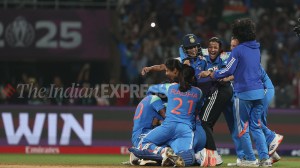Look at its capability: Rafale makers to India
At a time when the United States and France have taken the lead in engaging India and other emerging economies to find a way out of the global financial mess...

At a time when the United States and France have taken the lead in engaging India and other emerging economies to find a way out of the global financial mess, aviation majors of the two countries are locked in a turf battle of a different kind, vying with each other for the $10-billion India contract for 126 Medium Multi-Role Combat Aircraft (MMRCA).
Of the six in the fray for the MMRCA contract, two are from the US — the Lockheed Martin F-16 and the Boeing F/A-18E/F Super Hornet — while the French are offering the omnirole Rafale fighter which has already been chosen by their air force as the future mainstay. The other contenders are the Saab Gripen from Sweden, the Eurofighter Typhoon and the Russian MiG-35.
As they await an Indian decision on the bids, Dassault Aviation and avionics major Thales, responsible for the design and development of the Rafale, have for the first time expressed a sense of unease over the format of the MMRCA request for proposal (RFP), pointing to the “gross mismatch” between the types of aircraft in the fray.
Officials of the two firms say “it’s like comparing apples and oranges” — the Saab Gripen and F-16 are single-engine fighters while the Rafale, which is a multi-role aircraft, has two engines.
“The Rafale is a a twin-engine, heavier aircraft and in the same class as the Super Hornet and the Typhoon. The other three aircraft are of lighter variety. The India RFP, in the first analysis, is not extremely demanding but the IAF has to decide whether it wants a heavy or a light aircraft. We are worried, we don’t want a situation where the other three are RFP compliant but we lose out on the price differential,” J P H P Chabriol, senior vice-president of Dassault Aviation and responsible for military sales in Asia, Africa and America, told a group of visiting Indian journalists.
Similar fears were expressed by Francois Quentin, senior vice-president of Thales Aerospace Division, and Pierre-Yves Chaltiel, CEO of Thales Airborne Systems, though both said they were very hopeful that the Rafale would make the cut. “India has to decide whether it is looking at numbers or operational capabilities of the aircraft it thinks will meet its future needs,” said Chaltiel. Quentin said they were counting on the “very happy Indian experience” with the Mirage 2000 — the Rafale is from the same stable, though a generation ahead — to secure the India contract.
Officials declined to reveal the unit price for a Rafale saying “that can be discussed once India decides on the RFP” but it is estimated that a single fighter could cost anything between $60 million and $90 million.
But it is the operational capabilities of the Rafale that is keeping French hopes alive for the MMRCA contract. Briefing reporters at the French Air Force base in St Dizier, Rafale pilots said the fighter can be used simultaneously for both air combat and ground attack missions, a capability which allows the use of fewer machines to achieve desired results.
In March 2007, the Rafale was deployed for the first time in combat operations in Afghanistan, flying out of Kandahar as part of coalition forces. Though there were no air-to-air missions to test its capabilities — the Taliban have no air force — the Rafale carried out laser-guided bombing missions in support of NATO ground troops.
The French Navy was the first to make the Rafale operational in June 2004, deploying it on the carrier Charles de Gaulle. Exactly two years later, the French Air Force made its first Rafale squadron operational for air defence and precision strikes. The aircraft relies on state-of-the-art equipment, its data fusion system allowing a pilot to quickly build up a tactical picture, identify targets in the air and on the ground and engage them from a stand-off position with precision weapons. There is no primary sensor on the Rafale — the electronic scanning radar, the front sector optronics, the Spectra electronic warfare suite and a secure datalink ensure situational awareness to the hilt. The Spectra system and ‘low observable’ airframe allow the Rafale to fly virtually undetected through air defence networks.
On board the Rafale are a wide range of passive sensors and missiles — the front sector optronics and the MBDA’s infrared-guided Mica IR missile allow totally silent interceptions. The aircraft can be equipped with a range of missiles, precision-guided weapons and fuel tanks. For autonomous air operations, it can be equipped with a buddy-buddy refuelling pod under the fuselage and four external drop tanks under the wings — This gives the strike force an embedded in-flight refuelling capacity.
Dassault Aviation and Thales officials hope to build on the recognised track record of the Mirage 2000 — there are currently 51 Mirage 2000 at the IAF base in Gwalior and the French say they are ready to upgrade these to the standards of Mirage 2000-5 if India gives the go-ahead — and make a case for the Rafale in the IAF. The Rafale, though it has already been “combat proven” in the heat and dust of Afghanistan, will be brought to India next year and put through tests over the deserts of Rajasthan, in freezing Ladakh and humid Bangalore.
“The aircraft is very reliable, easy to maintain and repair — less than 30 per cent what it takes on a Mirage 2000. We believe the Rafale should be the natural choice for India after its Mirage 2000 experience,” said a French Air Force pilot.
(The reporter is in France as part of a media group invited by Thales)



- 01
- 02
- 03
- 04
- 05




























